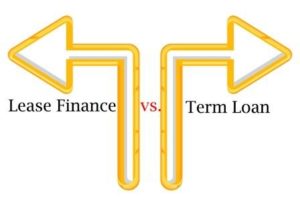A lease is defined as a contract under which one party, i.e., the owner of the asset, hereby called The LESSOR, provides the asset for usage to another party, i.e., the LESSEE, for the period of time known as the term of lease which is mutually agreed upon by the two parties and charges a consideration in the form of periodic lease rental payments, for the asset. The LESSOR retains the ownership of the asset. Let us see more in detail about the lease finance vs term loan.
Term Loan
The term loan is a type of financing given by financial institutions such as commercial banks, development banks, and special institutions for lending money. Normally, it is of two types: Long Term and Short Term. The borrower takes the lump sum amount and agrees to return the amount along with interest. The whole amount is repaid within the stipulated time in installments, including both principal and interest. There is a processing fee as a cost to acquire this type of financing. Generally, the term loan is obtained for financing large expansion or diversification of an organization. The borrower has to submit his financial statements and his net worth capacity so that the lender can assess the ability of the borrower to pay back the loan on the assumption that their profit will increase over time.
For raising a business’s supply capabilities, purchasing an asset, or for any expansion, the term loan is an easy option to arrange finance quickly.
Lease Finance vs Term Loan
In easier terms: Should I lease or should I buy?

Down Payment
A down payment is not required while taking an asset on a lease. Only a periodic lease rental payment is required, which is lower than the down payment percentage. Whereas in the case of a term loan, the borrower has to pay a small percentage in the form of a down-payment (margin money) at the beginning of the transaction and an installment amount at the required time, and the balance amount is financed by the loan.
The Option of Buying the Asset
The lessee uses the asset up to the lease period and pays the rentals. He can buy the asset at the end of the lease. Whereas in the case of loan financing, it is compulsory for the user to buy the asset as soon as he gets the loan.
Also Read: Difference Between Lease and Finance
Security
No security, in any form, is required for lease financing. At the same time, the borrowers need to pledge their existing assets as primary /collateral security in case of a term loan.
Presentation in Financial Statements
In Lease, the asset’s value is not included in the financial statements. Whereas in the case of loan financing, the asset appears on the asset side, and a corresponding liability for loans appears on the liability side.
Tax Implication
In the case where the asset is purchased on loan, the user can claim interest on loan payment (which decreases every year due to part payment of principal also) and the depreciation of the asset (which decreases every year due to written down value effect). Whereas in the case of lease financing, the user can claim only lease rentals that are uniform during the lease period.
Cash Flow
Since there is no purchase of an asset in lease financing, the cash flow is limited up to the lease rentals. Whereas in the case of the term loan, the cash flow includes downpayment, loan received, purchase of the asset, and installment paid at the required time.
Transfer of Risk Due to Asset Devaluation
In the case of lease financing, the ownership of an asset is not attached to the user, so the risk of asset devaluation is transferred to the lessor. Whereas in the case of loan financing, the user of the asset has to bear all the risk of asset devaluation due to changes in technology
In a nutshell, leasing makes it easier to use an asset for less money. So, leasing sounds advantageous for entrepreneurs who are not cashing rich. But if we take the long-run view, we will always have a payment to make but no ownership. On the other hand, if we consider buying an asset through term loan financing, the asset belongs to the owner after a few years’ installment payments, and the periodic payments also stop. The lease finance does not have the risk of asset maintenance and devaluation, whereas this risk exists in the case of a term loan. It is the ultimate user to decide his needs and weigh the pros and cons and what best suits his organization.

